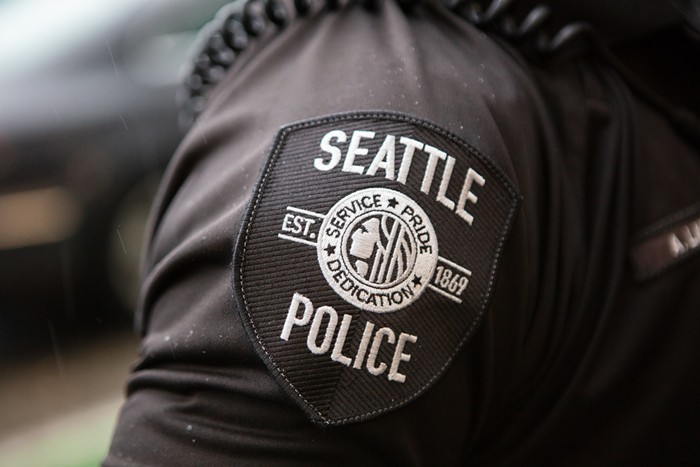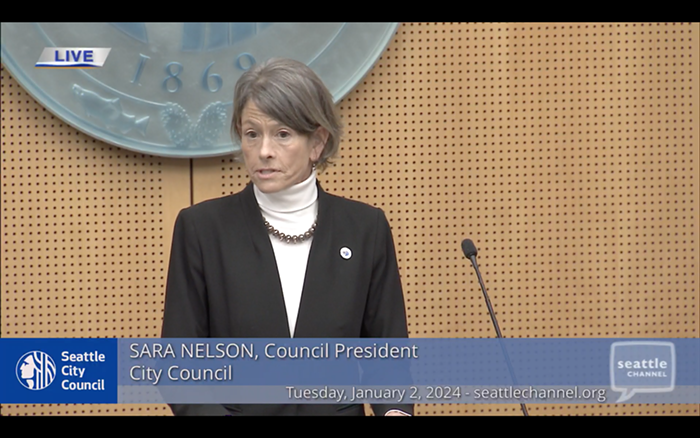
Over the weekend, the Seattle Times Editorial Board ran an editorial calling on Sound Transit to "hold off on Sound Transit 3." This will likely be just the first of many calls from the Times to kill ST3, the light rail expansion proposal headed for your November ballot, so we should familiarize ourselves with the arguments—and why they're complete bullshit. Let's take a look.
The [Sound Transit] board should pause and give voters time to understand and respond to the region’s largest ballot measure.
Pausing would allow for a more extensive, regional conversation about whether ST3’s mix of light-rail, buses and heavy rail should take the lion’s share of spending over the next generation.
Sound Transit has been planning for ST3 for years. The first ST3 workshop was held in 2012, after which the Sound Transit Board decided to put a measure on the November 2016 ballot, according to a Sound Transit spokesperson. Since then, there have been years of planning and meetings. That ramped up last summer when Sound Transit asked people to rank the projects that were most important to them. Then, this spring, the agency offered a draft plan and asked for feedback. They received nearly 35,000 responses to an online survey. They heard one thing over and over: People wanted light rail faster. So, they answered with a plan that speeds up the delivery of new light rail lines.
The public wants many things from Sound Transit—more lines, better lines, lines that are built faster—but a "more extensive, regional conversation" is not one of those things.
What the Times wants, they quickly reveal, is not really more conversation but less rail.
Board members should consider a leaner Plan B that would continue extending the system’s north and south spine. It should rely more on flexible, rapid buses and less on costly, fixed light rail duplicating current bus routes. As proposed, light rail would get 86 percent of ST3’s capital spending.
We've had this fight before. Unless the region allows a dramatic expansion in bus-only lanes—that means taking lanes away from cars—buses sit in traffic. Even when buses are given dedicated lanes, those lanes rarely last the length of the route. That makes buses, even the ones labeled "rapid," slow and unreliable.
Today, Sound Transit operates some express buses, which run in HOV lanes. As traffic has worsened in those lanes, so have travel times on those buses. According to the agency, average weekday morning travel time has increased between 18 and 38 percent on four of its bus lines in just two years. As the region continues to grow, commuters will demand options that take them out of single occupancy vehicle traffic entirely.
Then there's this:
A pause and reset would not stop Sound Transit’s progress. It has funding for years to build and complete rail from Seattle north to Lynnwood, south beyond Sea-Tac and east to Redmond.
Yes, it's true that Sound Transit is in the process of building some new lines right now, lines that will continue no matter what happens to ST3. But this is still nonsense. A "pause and reset" would significantly delay much-needed projects. The photo below lays out what has to happen for a new light rail line to actually get built. Sound Transit talks and plans for years before they can break ground. And all that talking and planning needs to start as soon as possible in order to build the new lines before we're all dead.

But, you might be thinking, maybe the Times, unlike transit advocates, is fine with light rail lines that take decades to build. Nope!
ST3’s permanent taxes mean the region might pay forever. It would also take forever, figuratively, to reap the benefits.
Even under the accelerated schedule, the light-rail spine from Tacoma to Everett won’t be complete until 2036.
That's right: The Seattle Times Editorial Board is complaining that new light rail is going to take too long while calling for delays in planning and building new light rail. For fuck's sake.
Finally, there are cost concerns, which are likely to be the biggest rallying cry for ST3 opponents between now and November. Sound Transit's total package will cost $54 billion over 24 years, about $28 billion of that coming from new taxes.
ST3 would bring annual Sound Transit taxes on the average household to around $740 — to start.
Because ST3 includes a new property tax based on home values, its taxation would rise with the real-estate market.
ST3 also increases Sound Transit’s sales tax by 55 percent, from 0.9 cents to 1.4 cents, and nearly quadruples its vehicle-license tax, from $30 to $110 per $10,000 of value.
Over ST3’s 25-year span, and with inflation, the average King County home-owning household would pay $20,000 or more — not counting other transit taxes.
But Seattle residents are not taxed at a rate wildly out of line with other cities. The Times' own Gene Balk dealt with this question last year. While new levies have increased taxes in Seattle, a recent study ranked Seattle 38th out of 51 cities for the tax rate assessed. Property taxes are high, Balk explained, because property values are high, not because property owners are being taxed at unfathomable rates.
The Editorial Board also claims "State Treasurer Jim McIntire and some lawmakers are concerned ST3 consumes part of the state property-tax cap, which is being eyed as a potential solution to the education-funding gap." It's not the first time this has come up. State lawmakers must fund education and some of them want to do that in part with new property taxes. But property taxes are not the only place they can turn. What about instituting a capital gains tax or ending tax breaks or passing an income tax?
Back in the '60s and '70s, a bunch of spooked gray hairs kept us from getting a partially federally funded mass transit plan for Seattle. Financial problems and inept leadership killed the monorail. This year, it's the Seattle Times Editorial Board that will try to kill ST3.
Sound Transit is an imperfect agency. There are legitimate questions to be asked about some projects in the plan, the agency's public relations spending, and what they're doing to make sure contractors aren't discriminating against workers. But over the last decade, about 70,000 new people have moved to Seattle alone. By 2040, a million more new people are expected in Puget Sound. Facing that future, the region should be focused on speeding up, not slowing down, light rail.


















